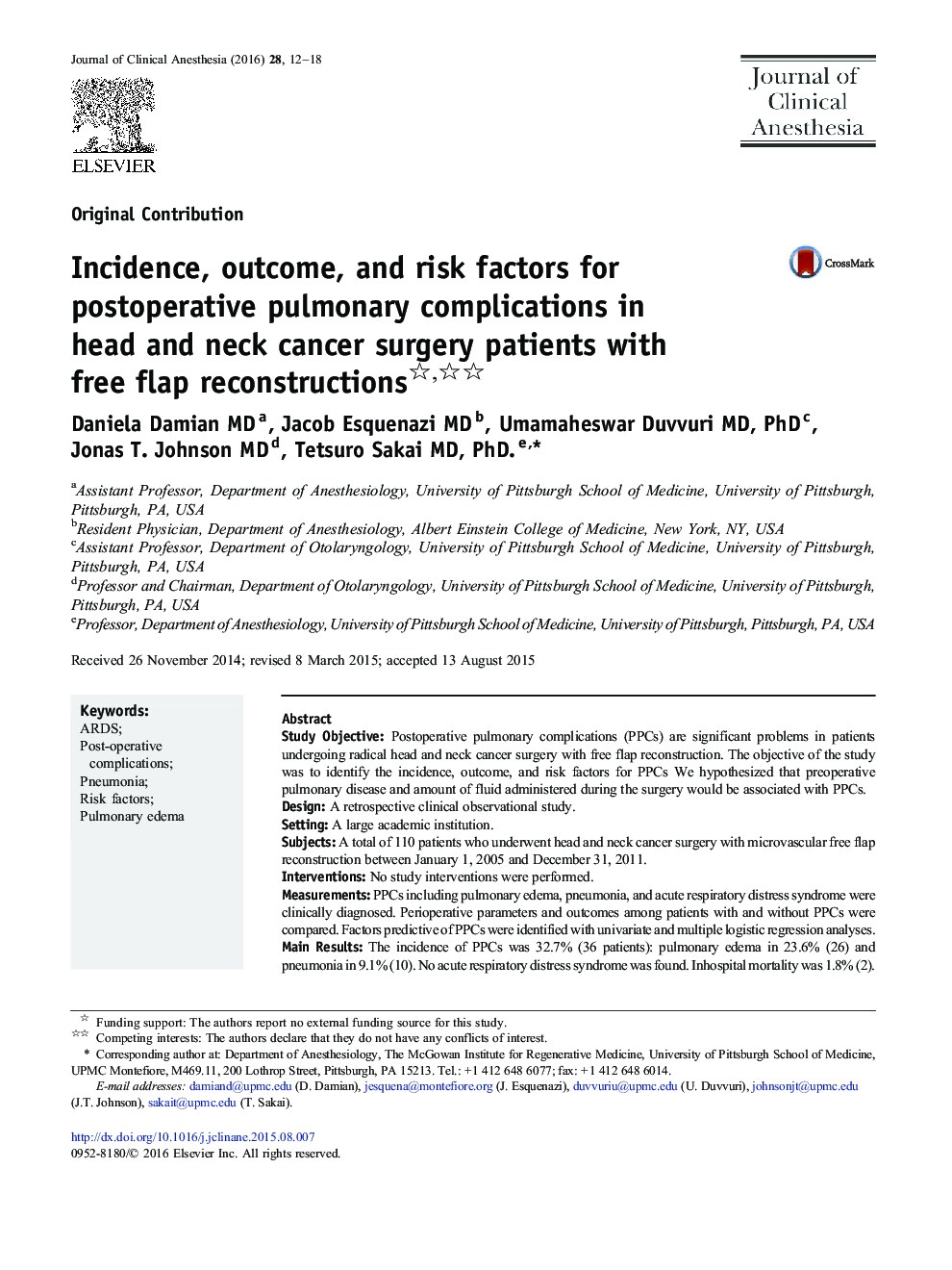| Article ID | Journal | Published Year | Pages | File Type |
|---|---|---|---|---|
| 2762348 | Journal of Clinical Anesthesia | 2016 | 7 Pages |
•Postoperative pulmonary complications (PPCs) are significant problems in patients undergoing radical head and neck cancer surgery with free flap reconstruction.•The incidence of PPCs in 110 patients who underwent the procedure was 32.7% (36 patients) with pulmonary edema in 23.6% and pneumonia in 9.1%.•The patients with PPCs required longer ventilation support, frequent ICU readmissions, and stayed longer in the hospital.•None of the preoperative or intraoperative parameters including pulmonary comorbidity or the amounts of intraoperative fluid/blood administration was found as the factor to predict PPCs.
Study ObjectivePostoperative pulmonary complications (PPCs) are significant problems in patients undergoing radical head and neck cancer surgery with free flap reconstruction. The objective of the study was to identify the incidence, outcome, and risk factors for PPCs We hypothesized that preoperative pulmonary disease and amount of fluid administered during the surgery would be associated with PPCs.DesignA retrospective clinical observational study.SettingA large academic institution.SubjectsA total of 110 patients who underwent head and neck cancer surgery with microvascular free flap reconstruction between January 1, 2005 and December 31, 2011.InterventionsNo study interventions were performed.MeasurementsPPCs including pulmonary edema, pneumonia, and acute respiratory distress syndrome were clinically diagnosed. Perioperative parameters and outcomes among patients with and without PPCs were compared. Factors predictive of PPCs were identified with univariate and multiple logistic regression analyses.Main ResultsThe incidence of PPCs was 32.7% (36 patients): pulmonary edema in 23.6% (26) and pneumonia in 9.1% (10). No acute respiratory distress syndrome was found. Inhospital mortality was 1.8% (2). No difference was found in survival between the patients with PPCs and those without (1 year survival was 69.4% vs 78.4%; P = .85). The patients with PPCs required longer ventilation support (median, 4 vs 2 days; P = .002) and more frequent intensive care unit readmissions (30.3% vs 5.7%; P = .001) and stayed longer in the hospital (median, 17 vs 12 days; P = .014). None of the preoperative parameters or intraoperative parameters including pulmonary comorbidity or the amounts of intraoperative fluid/blood administration was found as the factor to predict postoperative pulmonary compilations.ConclusionThe incidence of PPCs in patients undergoing radical head and neck surgery was 32.7% in 110 patients. Preoperative pulmonary disease or the amount of fluid administered during the surgery was not associated with PPCs.
